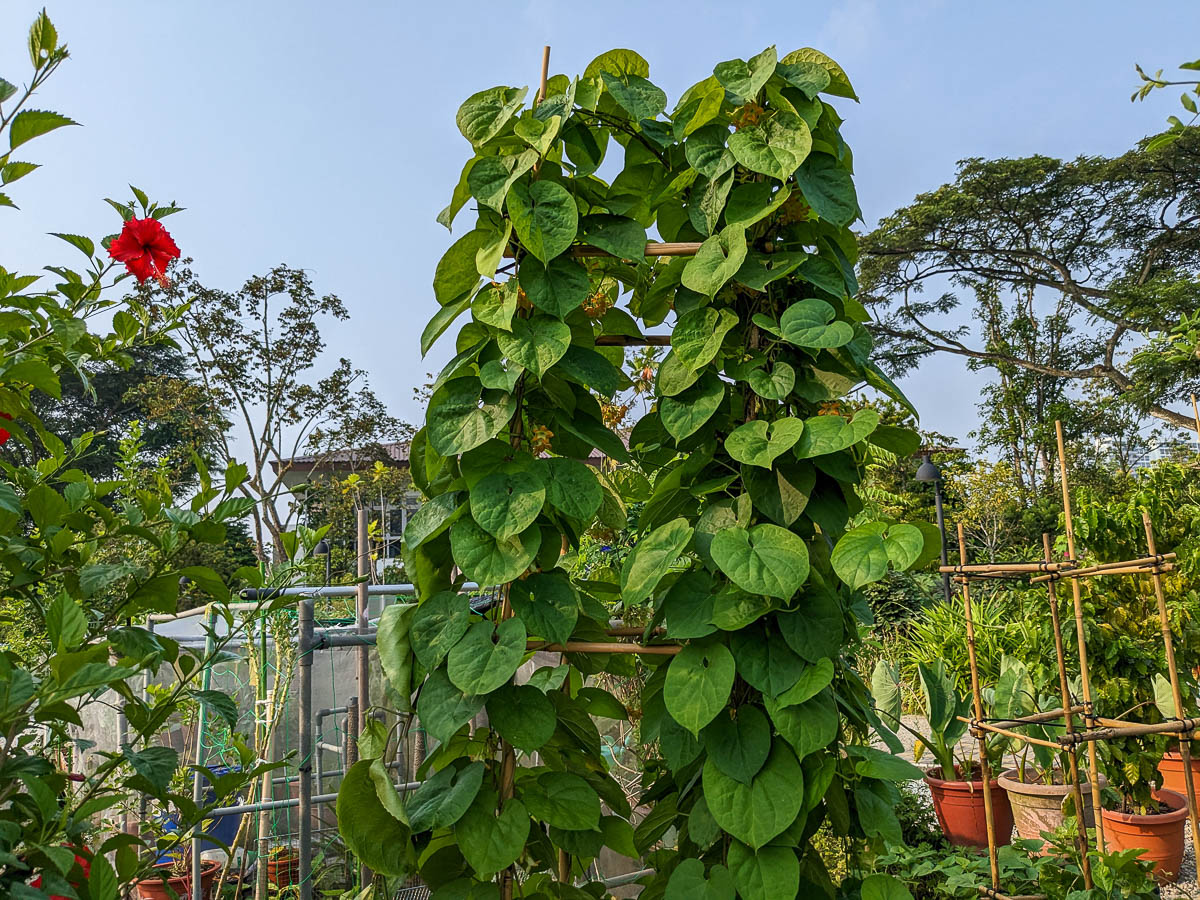Tonkin Jasmine
Tonkin Jasmine (Telosma cordata)
Other common names: Chinese Violet, Cowslip, East Coast Creeper, Fragrant Telosma, Tonkin Creeper, Bunga Tonkin, 夜来香

Tonkin Jasmine is an elegant creeper that produces fragrant edible flowers. The flowers are typically stir-fried or boiled in soup. Oil from the flowers can also be extracted to make perfumes.
As a perennial vine, it is an uncommon sight in edible gardens, and is usually grown in true ground.
Sun and soil needs:

This vine needs about 4-6 hours of direct sunlight or 6-8 hours of indirect sunlight. This plant will grow faster in direct sunlight but will tolerate shadier conditions.
Plants do best in pots with loamy soil at least 30cm deep, or in true ground. It is also tolerant of sandy soils but is unable to stand waterlogging. The plant can be grown in smaller pots about 15cm deep, but growth will be slow.
As a fast-growing vine, this plant needs a sturdy trellis to scramble on. Regular pruning will encourage additional growth and improve air circulation.
Growing:
Tonkin Jasmine grows rapidly even without fertilisers. However, feeding the plant with balanced fertilisers will encourage more growth. Plants can be fertilised once a month after germination for a fuller plant.
Because the vines will grow on top of each other, it is a good practice to prune regularly to improve ventilation and allow light to reach more of the plant.
This vine grows large very rapidly and can climb up to 10m if a tall enough surface is available. Prune it back to manageable heights (around 1.5m) to make harvesting and maintenance easier.
Harvesting:
Plants can be harvested for flowers at any time.
Propagation:
This vine can be propagated via stem cuttings rooted in soil.
Common problems & solutions:
This plant is relatively resistant to pests and disease if kept healthy.
If your plant has few to no flowers, you can fertilise the plant with fertilisers high in phosphorus and potassium. These nutrients encourage root and flower growth, which are important for the plant to produce more fruit.
This plant is vulnerable to fungal diseases that form leaf spots during the wet season or when the plant is overgrown. Increase air circulation with regular pruning and remove affected leaves to reduce the spread.
Aphids, Mealy Bugs, Whiteflies, and Spider Mites often infest the plant if it has underlying problems like waterlogging. Mechanical pest control methods like pruning the infested parts are the best methods for managing these pests in the short term, but resolving the underlying problem will prevent them in the long term.
Wilting leaves during hot weather is a sign of heat stress. Increase the number of times the plant is watered daily, and apply mulch at the base to prevent water loss.
This plant is especially vulnerable to root rot caused by waterlogging. It is best to grow the plant in loamy or sandy soil with plenty of soil amendments to prevent this.

